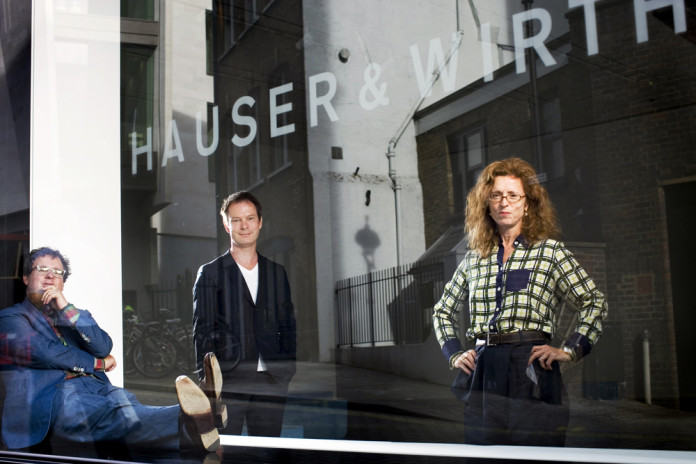
It is worth quoting from this idiosyncratic piece by Judith Benhamou-Huet about the ascendancy of Hauser + Wirth and Zwirner galleries because it somewhat echoes and confirms the observation made by others that in today’s global art world, these two veteran galleries have begun to eclipse (if that’s even the appropriate word) Gagosian in the art world’s imagination as the most-discussed art enterprises.
Like Gagosian, too, the galleries reaching a level of importance seems to bring out any number of sniping comments and observations. Benhamou-Huet hints darkly that the added gallery spaces are surreptitious real estate investments:
What’s more, they each have a handful of super-collectors who more or less blindly follow and back their stable of artists. One of the names most frequently cited is Friedrich Christian Flick, a German collector who now lives in Switzerland. A short version of the story is he’s the heir of the Nazi war criminal Friedrich Flick who since the ’80s he has acquired a colossal amount of work from the two galleries (some of which was donated to Berlin’s Nationalgalerie in 2008 and 2014).
According to a dealer from London, ‘Some of these ‘big fish’ are unknowns but in the space of only a few years one of them has bought 50 million euros of works by the Californian artist Paul McCarthy via Hauser & Wirth. In 2013 when Zwirner had his Koons exhibition in New York, he sold around 25 million of works by him.’
Working deeper into Benhamou-Huet’s piece, there are some interesting questions raised about the cost pressures created by having such large footprints. Here two dealers present the cause and effect in one direction even though it is plausible to suggest the other way around where growing gallery size is a response to these same forces:
Marc Blondeau, the Geneva private dealer, reckons that the current trend, promoted by the auction houses, consists in ‘selling prices instead of art. Some artists have become financial products.’ The gallerist Dominique Levy, based in London and New York believes that ‘these types of galleries have such high running costs that it inevitably impacts on the quantity of work the artists produce and on the pricesthey command.’
























